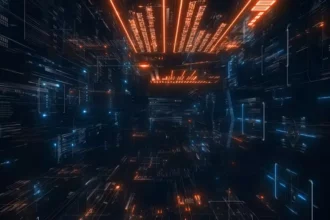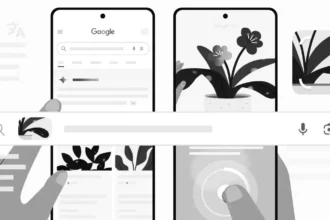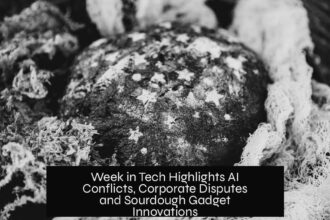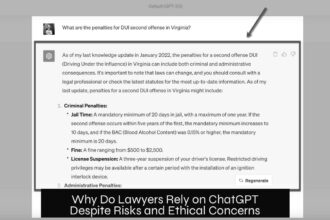Everyone Is Already Using AI (And Hiding It)
Artificial intelligence (AI) has quietly become an integral part of Hollywood filmmaking, with almost every studio and creative professional incorporating it into their workflows while often downplaying or disguising its use. Industry insiders describe AI’s penetration as inevitable and widespread, yet surrounded by legal, ethical, and labor concerns that encourage secrecy.
Table of Contents
ToggleAI’s Growing Role in Hollywood Filmmaking
Recently, a new AI-powered studio called Asteria Film Co. opened in Los Angeles, symbolizing this rising trend. Founded by entrepreneur Bryn Mooser and actress-writer Natasha Lyonne, Asteria represents a lineage of Hollywood innovators like Walt Disney and George Lucas who embraced new technology to advance storytelling.
Lyonne notes frequent underreporting of AI’s presence in productions. Crews often label AI tools ambiguously, such as “machine learning,” to conceal their true nature. Many practitioners admit everyone uses AI; they just don’t talk about it openly.
The Inevitable AI Adoption
At industry gatherings, the word “inevitable” recurs. From executives to creatives, there is recognition that AI integration will proceed regardless of resistance.
- A creative director commented, “It’s happening whether we like it or not.”
- Agents assert widespread AI use behind the scenes.
This acceptance stems from the pressures reshaping Hollywood’s economic landscape.
Responding to Hollywood’s Crisis with AI
The film industry faces an existential crisis marked by fewer movies, declining theater attendance, and layoffs. Studios struggle with profitability and budget constraints, increasing demand for cost-saving technologies.
“It’s harder to make a movie today than it ever has been,” an industry leader said.
Filmmakers increasingly ask studios how to leverage AI to halve production costs. Budgets are stretched thin; some projects needing $30 million barely have $15 million available. AI emerges as a potential lifeline enabling projects that might otherwise not get made.
Legal and Ethical Uncertainties
AI models generating video often rely on massive data scraped from copyrighted sources without clearance. This has prompted over 35 copyright lawsuits targeting AI companies, casting a shadow over AI’s future in Hollywood.
One producer warned that a blockbuster using AI could lead to decades of litigation.
In response, Asteria Film Co. markets itself as the first “ethical” AI studio, using only licensed training materials to set a standard for responsible AI use.
Studios Push Forward Despite Risks
Major studios continue to explore AI solutions, albeit quietly. They avoid public announcements, partly due to union sensitivities and ongoing legal uncertainties.
A mix of tech giants and artist-run startups fuels industry innovation. Runway, a media startup co-founded by Cristóbal Valenzuela, is a prominent example. Its tools are widely adopted by visual effects artists, filmmakers, and even major studios.
Runway’s Impact on Filmmaking
Founded in 2018, Runway began by enabling users to create brief videos from text prompts. By 2023, its capabilities advanced to simulate complex effects like explosions and create fantastical settings in minutes.
Valenzuela claims Runway enables films that couldn’t be made otherwise by cutting costs significantly. Its valuation surpassed Lionsgate’s market cap, reaching $3 billion.
Studios use Runway to repurpose existing content, altering formats and tones quickly. For example:
- Transforming live-action films into animated versions.
- Changing movie ratings or formats with minimal turnaround.
- Creating massive battle scenes digitally for a fraction of physical set costs.
AI tools aided productions like Everything Everywhere All at Once and Amazon’s House of David to meet demanding timelines and budgets with complex visual effects otherwise unattainable.
Secrecy and Labor Concerns
Union concerns over job displacement contribute to studios’ cautious, often covert use of AI. Agreements require biannual meetings between studios and unions to report AI usage, but off-the-books experimentation continues.
Some industry workers describe AI-generated content being “laundered” by artists who redraw or rework AI outputs to hide their origin. This practice maintains plausible deniability and avoids labor conflicts.
Key Takeaways
- AI has become a standard, yet underacknowledged, tool in Hollywood filmmaking.
- Adoption is driven by economic pressures and the need to reduce production costs.
- Legal battles over copyright and ethics create uncertainty about AI’s future in the industry.
- Startups like Runway offer advanced AI tools that democratize visual effects and editing.
- Studios use AI quietly to avoid union pushback and public scrutiny.
- AI transforms filmmaking workflows, enabling projects previously too expensive or complex.
Everyone Is Already Using AI (And Hiding It): Hollywood’s Secret Evolution
Are filmmakers actually using AI right under our noses? Absolutely. In fact, AI is everywhere in Hollywood — operating like that uncredited extra in every blockbuster, helping behind the scenes, yet often kept hush-hush. It’s no secret anymore that the film industry is bending, twisting, and adapting to new technologies, but many professionals prefer to downplay just how deeply AI has woven itself into the creative fabric.
So, why is everyone hiding their love affair with AI? And how is this quietly shaping Hollywood’s landscape? Pull up a chair—this story’s as fascinating as a plot twist in a Nolan movie.
The AI Infiltration of Hollywood: A Quiet Revolution
Gather a couple hundred creative minds inside an old soundstage in Eastside Los Angeles, and what do you get? A celebration for the arrival of Asteria Film Co., an AI-driven studio founded by entrepreneur Bryn Mooser and actress-writer Natasha Lyonne. Almost 100 studios like Asteria have popped up around Hollywood, signaling a seismic shift in filmmaking. As Mooser points out, “The story of Hollywood is the story of technology.” Walt Disney and George Lucas didn’t just tell stories—they revolutionized technology to tell them better. AI is the latest chapter.
Natasha Lyonne nails a common sentiment about the under-the-table use of AI: “If I’m directing an episode, I like to get really into line items and specifics, and you find out there’s a lot of situations where they’re calling it machine learning or something but, really, it’s AI.” Basically, many prefer to call it by another name.
The Inevitable Rise of AI—and the Art of Keeping It Quiet
At that Asteria party, whispers of inevitability echoed like a mantra. Studio execs in suits, filmmakers in jeans, they’re all on the same page. “It’s happening whether we like it or not,” declared a creative director sporting a cowboy hat. When an agent casually admitted, “Everyone’s using it. They just don’t talk about it,” it became clear: AI is Hollywood’s best-kept open secret.
The question is: why the secrecy?
One major reason is fear surrounding union pushback and legal uncertainties. Studios prefer to experiment in the shadows, avoiding public scrutiny or backlash. Unions have secured agreements to discuss AI usage twice a year, but behind closed doors, the experimentation continues, often unofficially. That’s the kind of cloak-and-dagger most of us associate with spy thrillers—but here it’s about technological transformation.
Hollywood’s Existential Crisis and AI’s Role as Lifesaver
The American film industry is no stranger to upheaval. Recently, Hollywood’s been described as being in an “existential crisis,” with studios downsizing film production, fewer viewers showing up, and layoffs piling up. As production pipelines tighten, profitability sinks. We hear things like, “It’s harder to make a movie today than ever before.”
AI isn’t just some shiny optional tool—it’s a necessity borne out of desperation. A major studio exec admitted that “almost every single production” asks, “How can I use AI to get back on budget?” The math is brutal: filmmakers need $30 million to make a movie but have only $15 million. AI offers a way to stretch funds, cut costs, and keep creative visions alive.
The Dark Side: Copyright Lawsuits and Ethical Concerns
Here’s the rub. Most AI video-generation models absorb mountains of copyrighted images and footage from the web, often without permission or pay. This violation has triggered **35+ copyright lawsuits**, some already moving through courts. Studio producers worry blockbusters could get tangled in legal battles for decades.
Against this backdrop, Asteria Film Co. highlights a daring claim: it trained its model exclusively on licensed content. They market themselves as “the first ethical AI studio” in Hollywood. If true, this could become a blueprint for responsible AI use moving forward.
Runway: AI’s Silent Game-Changer in Visual Effects
Let’s zoom into Runway, a tech startup co-founded in 2018 by Cristóbal Valenzuela. Runway’s AI began as a fringe idea but quickly turned heads by allowing filmmakers to produce short movie scenes from brief text descriptions. The cool part? Runway’s tools found early adopters not among execs, but the behind-the-scenes heroes—visual-effects artists.
By mid-2023, Runway could whip up realistic explosions and magical backdrops in minutes. Valenzuela sums it up: “We can’t make a $100 million movie, but we can make it for $50 million because of AI.” As prediction turned reality, Runway’s valuation hit $3 billion, surpassing Lionsgate’s market cap — a bold sign AI is not just a gimmick.
In a recent twist, filmmakers used Runway to generate trailers for films that hadn’t even been shot, cleverly preselling the movie based on AI-made scenes. It’s like pitching a film from a dream sequence!
AI’s Practical Magic: Massive Savings and New Creative Possibilities
- Studios with extensive film libraries, think Lionsgate, leverage AI to reshape existing content. Need a kid-friendly PG-13 version or an anime adaptation? AI makes it happen in hours instead of months.
- Picture this: a ten-second epic shot with 10,000 soldiers, horses, and a snowstorm—filming it in the Himalayas would consume days and millions. With AI like Runway, it retails for just $10,000.
- Oscar-winner Everything Everywhere All at Once used AI’s green-screen tools to streamline visual effects, saving time and dollars.
- Amazon’s biblical epic House of David featured a 90-second fantasy sequence only possible on their schedule and budget thanks to AI.
The moral? AI lets filmmakers do what they always dreamed—create spectacular worlds on slimmer budgets.
The Secret Experimentation and ‘Laundering’ AI Work
While big studios hesitate to announce AI use publicly, experimentation is rampant. One animator revealed behind-the-scenes workaround tactics—for example, a costume designer uses AI to generate concept art but then hires an illustrator to “clean” or redraw it, erasing any obvious AI marks. This subtle “laundering” avoids potential union disputes or copyright red flags.
How long can Hollywood maintain this delicate balancing act? AI could become not just accepted, but indispensable, yet not openly celebrated, at least for now.
What Does This Mean for the Future of Filmmaking?
The answer lies in balancing art and tech, ethics and economics. AI offers unprecedented power to streamline production and unleash creativity for anyone with a vision but limited cash. It also raises pressing questions—how will copyright laws evolve? Can ethical AI studios like Asteria set a standard? Will unions accept AI as part of their landscape? And how honest should Hollywood be about AI’s role?
While the thought of AI quietly shaping your favorite movies might seem unsettling or thrilling, it’s already here, humming beneath the studio lights. Perhaps transparency and embracing AI openly—while respecting artists and laws—will be the next big plot twist.
Can You Spot AI’s Influence in Your Favorite Film?
Next time you watch a blockbuster or a thoughtful indie flick, consider this: which shots, effects, or scenes might owe their existence to AI? Are you witnessing a genuine human creation, or a hybrid masterpiece with AI as the unseen co-director?
Hollywood’s AI revolution isn’t sci-fi—it’s the here and now, quietly rewriting the script on how movies are made, funded, and imagined.
Q1: Why do many Hollywood professionals hide their use of AI?
People often avoid mentioning AI use because it carries stigma and fear of backlash. Calling it “machine learning” sounds safer than admitting to AI. Transparency is low despite widespread adoption.
Q2: How is AI helping filmmakers deal with budget shortages?
AI cuts production costs by generating scenes, effects, and edits faster and cheaper. Some creators use AI to meet budgets that are half what they need, squeezing more out of limited funds.
Q3: What legal risks does AI pose to Hollywood studios?
Many AI models use copyrighted material without permission. This has triggered lawsuits. Studios face possible long litigation battles, which could block or delay projects for decades.
Q4: How are studios using AI beyond creating new content?
Studios repurpose existing footage with AI by changing format, tone, or rating. For example, turning live-action films into cartoons or softening content for younger viewers.
Q5: What makes some AI studios claim ethical use of AI?
Some studios train AI only on licensed material rather than scraping the web. They promote this as ethical to avoid copyright issues and build trust with creators and audiences.





